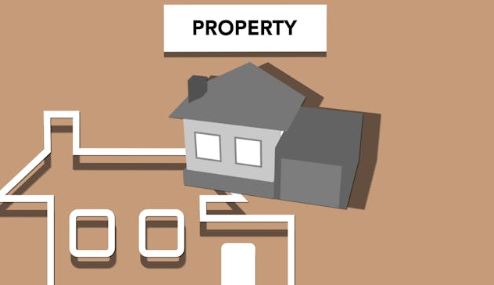Business
Guide to Construction Loans in Canada 2025

Building a home or a commercial property in Canada requires careful planning and financial backing. Unlike traditional mortgages, construction loans are designed to finance the building process from start to finish. Whether you’re a homeowner looking to build your dream house or a developer working on a large-scale project, understanding how construction loans work is crucial.
In this guide, we will explore everything you need to know about construction loans in Canada in 2025, including eligibility criteria, types of loans, interest rates, and tips for securing the best financing for your project.
What is a Construction Loan?
A construction loan is a short-term loan used to cover the cost of building a home or a commercial property. Unlike a traditional mortgage, which provides a lump sum upfront, construction loans are disbursed in stages as the construction progresses. These loans typically last 12 to 24 months, after which they can be converted into a mortgage or repaid in full.
How Construction Loans Work
Construction loans work differently from regular home loans. Instead of receiving the full loan amount upfront, the lender releases funds in “draws” based on the completion of construction milestones. For example:
- First draw: Land purchase or initial groundwork
- Second draw: Foundation completion
- Third draw: Framing and structural work
- Fourth draw: Interior and exterior work
- Final draw: Completion of construction
Lenders often require inspections at each stage before releasing the next portion of the loan to ensure the project is progressing as planned.
Types of Construction Loans in Canada
Different types of construction loans are available depending on your project’s scope and financial situation. Here are the most common types:
1. Self-Build Construction Loans
This type of loan is ideal for individuals looking to build their own home. It provides funds for purchasing materials and paying contractors. Since it involves higher risks, lenders often require a larger down payment and a detailed construction plan.
2. Builder/Contractor Construction Loans
If you hire a professional builder or contractor to manage the construction, this loan provides funding directly to them. It requires proof of the builder’s experience, licensing, and financial stability.
3. Construction-to-Permanent Loans
This option allows borrowers to convert their construction loan into a traditional mortgage once the building is completed. It eliminates the need to reapply for financing, making it a convenient option for homeowners.
4. Commercial Construction Loans
These loans are designed for developers and businesses constructing office buildings, apartment complexes, or commercial spaces. Lenders assess project feasibility, expected revenue, and market demand before approving the loan.
Eligibility Requirements for a Construction Loan in Canada
Since construction loans carry more risk than traditional mortgages, lenders have strict eligibility criteria to ensure borrowers can complete the project successfully. Here’s what you need:
1. Strong Credit Score
A credit score of at least 650 is typically required, although higher scores improve approval chances and help secure better interest rates.
2. Detailed Construction Plan
Lenders require a comprehensive blueprint that outlines the project’s timeline, budget, materials, and contractor details. This helps them assess the feasibility of the project.
3. Significant Down Payment
Most construction loans require a 20% to 30% down payment due to the increased risk. Some lenders may allow a lower down payment if you own the land.
4. Proof of Income and Financial Stability
Lenders need assurance that you can handle loan repayments. This includes: ✔️ Income verification (pay stubs, tax returns)
✔️ Debt-to-income ratio assessment
✔️ Existing assets and savings
5. Licensed Contractor or Builder
If you are not building the property yourself, lenders prefer that you work with a licensed and experienced contractor to reduce the risk of project delays or cost overruns.
Construction Loan Interest Rates and Terms in 2025
Construction loans generally have higher interest rates than traditional mortgages due to the increased risk. In 2025, interest rates for construction loans in Canada typically range between:
- 5% to 10% for fixed-rate loans
- Prime rate + 1% to 5% for variable-rate loans
Loan Terms and Repayment
- Short-term loan duration: 12 to 24 months
- Interest-only payments during construction
- Final loan conversion: Some loans transition into a mortgage upon completion
Since interest rates fluctuate based on the Bank of Canada’s policies, borrowers should keep an eye on market trends when applying for a construction loan.
Steps to Apply for a Construction Loan in Canada
Step 1: Research and Choose a Lender
Not all financial institutions offer construction loans, so it’s important to research banks, credit unions, and private lenders to find the best options.
Step 2: Get Pre-Approved
A pre-approval helps determine how much you can borrow and gives you an estimate of loan terms and interest rates.
Step 3: Submit a Detailed Construction Plan
Lenders require a well-documented plan, including: ✔️ Architectural blueprints
✔️ Cost estimates and budget breakdown
✔️ Timeline and milestones
Step 4: Provide Financial Documents
Prepare documents such as: ✔️ Proof of income (employment letters, tax returns)
✔️ Credit report
✔️ List of existing debts and assets
Step 5: Secure a Down Payment
Ensure you have enough funds for the required down payment (usually 20%-30%).
Step 6: Loan Approval and Funding
Once approved, funds are disbursed in phases based on project completion milestones.
Step 7: Construction Monitoring
Lenders often conduct periodic inspections to ensure the project stays on track before releasing additional funds.
Step 8: Loan Conversion or Full Repayment
Once construction is complete, you can either: ✔️ Pay off the loan in full
✔️ Convert it into a long-term mortgage
Tips for Securing a Construction Loan in 2025
✅ Improve Your Credit Score – A higher credit score leads to better loan terms.
✅ Work with Experienced Contractors – Lenders prefer projects managed by reputable builders.
✅ Be Prepared for Unexpected Costs – Construction projects often run over budget, so having a financial cushion is essential.
✅ Choose a Loan That Converts to a Mortgage – This simplifies financing after construction is complete.
✅ Compare Lenders – Interest rates and loan terms vary, so shopping around is key.
Construction Loans in Ontario: What You Need to Know
If you are looking for a construction loan Ontario, it’s important to understand the specific lending landscape in the province. Ontario has numerous lenders offering competitive rates, but approvals can be stricter due to the province’s high real estate demand. Working with local lenders and mortgage brokers can help you navigate the process more efficiently.
Final Thoughts
A construction loan is a great financing option for building a new home or commercial property, but it requires careful planning and financial discipline. Understanding loan types, eligibility criteria, and repayment terms will help you make an informed decision.
If you’re considering a construction project in Canada in 2025, take the time to research lenders, prepare a detailed plan, and secure financing that aligns with your budget and long-term goals. With the right approach, you can successfully fund your construction project and turn your vision into reality.
Business
Sales Reps No Longer Required: Outscaled’s Framework Closes Clients Without the Close

Outscaled is challenging the very foundation of traditional sales teams with a framework that eliminates the need for discovery calls, demos, or high-pressure sales reps. The company’s flagship system, the Silent Method, is helping hundreds of businesses close high-ticket deals without ever jumping on a call.
The Silent Method was developed by Outscaled co-founders Jake and Nathan Arthur after scaling multiple remote-first companies to 7 and 8 figures. At its core is a single, persuasive digital asset – a conversion-focused sales page that guides potential clients through the offer, pricing, proof, and action steps, all without a sales conversation.
“Most founders don’t want to spend their days chasing leads or managing closers,” said Jake, co-founder of Outscaled. “We designed the Silent Method to take the friction out of selling. It works 24/7, even with cold traffic, and lets our clients scale without burnout.”
This automation-friendly sales approach is particularly powerful for coaches, consultants, and agencies who want to sell premium offers without the complexity of traditional funnels or sales calls. Instead of building teams of closers, Outscaled clients are leveraging their Sales Sheets to pre-sell, qualify, and convert prospects using a proven structure and streamlined follow-up.
“The biggest myth in sales is that persuasion happens on a call,” added Nathan Arthur. “In reality, it happens before the call, or better yet, without one at all. The Silent Method gives founders back their time and their control.”
With results pouring in from industries ranging from business consulting to design services and personal development, Outscaled’s framework is quickly becoming the new standard for high-ticket digital sales.
For more information, visit outscaled.io or contact:
Contact:
Outscaled Team
team@outscaled.io
+1 954-908-6234
Outscaled Facebook
Outscaled Instagram
Business
How Does the RapidWorkers Site Work to Earn Money?

Earning money online has become a global trend, but many people are unsure where to start. Traditional freelancing often demands specialized skills, a strong portfolio, and significant time investment. On the other hand, survey sites and “get-rich-quick” platforms frequently disappoint with low payouts or questionable legitimacy.
This is where rapid workers steps in. Rapidworkers is a micro-task site designed to connect businesses that need small online jobs completed with individuals willing to perform them for pay. If you’ve ever wondered how RapidWorkers makes money, this article will walk you through the challenges it solves, strategies to maximize your earnings, the benefits of the platform, and tools that can help you succeed.
The Problem: Why Making Money Online Feels Overwhelming
For most people, earning money online presents several challenges:
- High skill barriers: Many freelance platforms favor those with technical expertise in design, coding, or copywriting.
- Long turnaround times: Larger projects often require days or weeks to complete before payment.
- Unclear payment terms: Some sites delay or fail to pay workers.
- Limited global access: Certain platforms restrict opportunities to specific regions.
For example, a study by Statista shows that while digital gig work is growing rapidly worldwide, many entry-level workers feel excluded due to a lack of experience. This creates demand for a platform that provides fast, simple, and legitimate micro-income opportunities, exactly what Rapidworkers offers.
Getting Started With Rapidworkers
Starting with Rapidworkers is simple and quick. You only need a few steps to begin earning money by completing small tasks online. These tasks are easy and do not require special skills. The site connects workers with employers who need small jobs done.
This section shows how to create your account and set up your profile. Both steps are important to get started and to receive tasks that match your skills.
Creating An Account
Go to the Rapidworkers website and find the sign-up button. Fill in your email, username, and password. Use a valid email because you will need to confirm it. After registering, check your email for a confirmation message. Click the link in that email to activate your account. Once activated, you can log in and start working.
Setting Up Your Profile
After creating your account, set up your profile. Add your full name and country. This helps employers know who they are hiring. Upload a clear profile picture if possible. Write a short description about yourself. Mention any skills or experience you have. A complete profile increases your chances of getting tasks. Keep your profile honest and updated. This builds trust with employers and helps you earn more.
Types Of Tasks Available
The Rapidworkers site offers many types of tasks to earn money. Each task is simple and quick. This variety helps workers find tasks that suit their skills and time. Understanding the types of tasks can help you choose the best way to earn.
Micro Tasks Overview
Micro tasks are small jobs that take just a few minutes. They often need little training or special skills. These tasks include clicking, watching videos, or filling out surveys. Each completed task earns a small payment. Doing many micro tasks can add up to a good income.
Popular Task Categories
Some common task categories stand out on Rapidworkers. Data entry jobs ask you to input or check information. Social media tasks include liking posts or following accounts. Website testing tasks ask for feedback on websites or apps. Surveys gather opinions on products or services. These categories offer many chances to earn money quickly.
How To Choose Tasks
Choosing the right tasks on Rapidworkers can help you earn money faster. The site offers many tasks, but not all tasks pay the same or take the same time. Picking tasks carefully saves your time and increases your earnings.
Focus on tasks that match your skills and pay well. Avoid tasks that seem too hard or pay very little. Use the site tools to filter and select tasks smartly.
Filtering Tasks By Difficulty
Rapidworkers lets you filter tasks by difficulty. Easy tasks take less time but may pay less. Hard tasks might pay more but need more effort. Choose tasks that suit your skill level. This helps you finish tasks quickly and avoid mistakes.
Selecting High-paying Tasks
High-paying tasks offer better rewards for your time. Look for tasks with clear instructions and good ratings. Avoid tasks that seem suspicious or have low pay. Prioritize tasks that pay more for less work. This strategy helps you earn more in less time.
Completing Tasks Effectively
Completing tasks effectively on Rapidworkers is key to earning steady money. Each task demands attention to detail and meeting specific instructions. This helps avoid rejections and saves time.
Understanding the task well leads to faster approval and more earnings. Focus on accuracy and follow the rules closely. Small mistakes can cause delays or loss of payment.
Task Requirements And Guidelines
Every task on Rapidworkers comes with clear requirements. Read them carefully before starting. They explain what you must do and how to submit your work.
Some tasks need screenshots as proof. Others require filling out forms or clicking links. Follow all instructions exactly to get paid.
Ignore extra steps that are not listed. Stick to the task scope to avoid rejection. Check the deadline and finish on time.
Tips For Fast And Accurate Completion
Focus on one task at a time. This reduces errors and speeds up work. Use a checklist to track steps for each task.
Double-check your answers or uploads before submission. Correct mistakes early to prevent delays. Stay organized to handle multiple tasks smoothly.
Use a stable internet connection to avoid interruptions. Save your work regularly. This keeps progress safe and helps meet deadlines.
Payment Methods And Payouts
Understanding payment methods and payouts on Rapidworkers is essential for users who want to earn money effectively. This section explains how you can receive your earnings, the minimum amount needed to withdraw, and the time it takes to get paid. Clear knowledge about these aspects helps you plan your tasks better and avoid surprises.
Available Payment Options
Rapidworkers offers several ways to get paid. The most common option is PayPal, a secure and widely used platform. You can also choose payment via Payoneer, which is popular for international users. Some users prefer gift cards, which Rapidworkers occasionally provides. These choices give flexibility to users worldwide.
Minimum Withdrawal Limits
Before requesting a payout, you must reach a minimum balance. Rapidworkers sets this limit at $10. This amount is easy to achieve by completing small tasks. Keeping track of your earnings helps you know when you can withdraw money. Reaching the limit quickly encourages steady task completion.
Payment Processing Times
After you request a payout, Rapidworkers processes payments within 3 to 5 days. This time frame depends on the payment method you choose. PayPal payments usually arrive faster than other options. Being aware of processing times helps you manage your expectations.
Maximizing Earnings On Rapidworkers
Maximizing earnings on Rapidworkers requires a smart approach. Consistency and wise task choices can boost your income. Understanding the referral program adds another income source. Focus on strategies that fit your time and skills. Small efforts each day add up quickly.
Consistency And Task Selection
Regular activity on Rapidworkers helps maintain steady earnings. Check the site daily to find new tasks. Choose tasks you can complete fast and well. Simple tasks often pay less but take less time. Complex tasks may pay more but need more effort. Balance your time and task difficulty for the best results. Avoid tasks that seem unclear or risky. Staying active and selective leads to steady income growth.
Referral Program Benefits
Rapidworkers offers a referral program to increase your earnings. Invite friends to join and earn a percentage of their income. This creates a passive income stream alongside your tasks. Share your referral link in places where people trust you. Explain the benefits of joining Rapidworkers to your referrals. The more active your referrals are, the more you earn. Use the referral program as a long-term earning strategy.
Common Challenges And Solutions
Using Rapidworkers to earn money has some challenges. Knowing these helps avoid problems. Simple solutions keep your account safe and earnings steady.
Avoiding Task Rejections
Task rejections reduce your earnings and lower your rating. Read each task’s instructions carefully before starting. Follow every step exactly as asked.
Check your work for mistakes before submitting. Double-check links, answers, and any required proof. Submit clear screenshots if needed. This helps show you completed the task correctly.
Do not rush tasks. Taking time improves accuracy and lowers rejection chances. If unsure about a task, skip it. Choose tasks you understand well.
Dealing With Account Issues
Account problems can stop your earnings. Keep your login details safe and private. Use a strong password and change it regularly.
Verify your email and profile information fully. Incomplete profiles may cause delays or restrictions. Contact Rapidworkers support quickly if you face issues.
Stay polite and clear in your messages to support. Provide all requested details to speed up help. Avoid using multiple accounts to prevent bans.
User Experiences And Reviews
User experiences and reviews reveal how Rapidworkers helps people earn money. Many users share their personal stories and challenges. These insights show what to expect from the site. Reading real feedback helps new users decide if it suits them.
Success Stories
Some users report steady earnings from simple tasks. They praise the easy signup process and fast task completion. Many mention receiving payments on time without hassle. For some, Rapidworkers became a small but consistent income source. Success often depends on task availability and user effort.
Potential Drawbacks
Some users face low pay rates for certain tasks. A few mention waiting longer to reach the minimum payout. Task quality can vary, with some feeling repetitive or dull. Occasional account restrictions have affected a small number of users. Patience and careful task selection can reduce these issues.
Frequently Asked Questions
What Is Rapidworkers, And How Does It Pay?
Rapidworkers is a micro-task website that pays users for completing small online jobs. Payments are made via PayPal or other supported methods once tasks are verified and approved. Users earn money by performing simple tasks like surveys, app downloads, and data entry.
How Do I Start Earning Money On Rapidworkers?
To start earning, sign up for a free account on Rapidworkers. Browse available tasks and complete those that match your skills. Submit proof of task completion for approval. Earnings accumulate in your account and can be withdrawn after reaching the minimum payout threshold.
Are Rapidworkers Tasks Easy And Quick To Complete?
Yes, most Rapidworkers tasks are designed to be simple and fast. Tasks typically take a few minutes each, such as watching videos, signing up for websites, or sharing content. This allows users to earn money steadily by completing multiple tasks daily.
Is Rapidworkers A Legitimate Site For Earning Money?
Rapidworkers is generally considered legitimate as it has paid thousands of users worldwide. However, earnings may be modest, and task availability varies. Always be cautious and avoid tasks requiring sensitive personal information to protect your privacy and security.
Conclusion
Making money online doesn’t have to be complicated. With Rapidworkers, you can start earning by completing simple micro-tasks, even if you have no advanced skills or prior freelancing experience. The platform is reliable, easy to use, and designed for both businesses seeking quick online engagement and individuals looking for flexible income opportunities.
Business
Why More Indian Start-ups Prefer Business Setup Dubai UAE for Expansion

When Indian start-ups think about moving beyond home ground, Dubai usually comes up early in the discussion. It is nearby, easy to reach, and already familiar to many because of trade links and travel. The city is more than just a stopover; it has become a natural choice for businesses that want to take their next step abroad.
And when people talk about business setup Dubai UAE, they are not just thinking about tall towers or global offices. They are looking at a system that actually supports registration and growth.
Why Start-ups Look at Dubai?
There are a few reasons why young companies from India keep choosing a business setup in Dubai. The city connects East and West, offers multiple free zones, and has a large base of international clients. For a founder sitting in Mumbai, Bengaluru, or Delhi, Dubai feels both global and accessible at the same time.
But moving into a new country also means working with a framework that is not the same as India’s. Licences, approvals, and banking processes are all part of the deal. This is where guidance becomes essential; otherwise, time and energy get wasted in figuring things out.
Role of Consultants in Setup
A business set up consultant in Dubai is often the first call many founders make once they decide to expand. Why? Because the consultant already knows the route. Instead of trial and error, the process gets mapped clearly.
Think of a start-up founder trying to choose between a mainland entity and a free zone option. On paper, both look fine. In practice, the decision affects ownership, office space, and future expansion. Consultants break down these differences in simple terms and help the founder decide what fits best.
Typical areas where consultants step in:
- Choosing between the free zone, the mainland, and the offshore.
- Preparing and checking incorporation documents.
- Coordinating with different authorities for faster approvals.
- Helping with bank account formalities and visa applications.
For a start-up, this support means less time wasted on queues and more time spent on product and customers.
Business Setup Services in Dubai
The range of business setup services in Dubai goes beyond just forming a company. Many service providers handle the after-work as well.
That includes:
- Drafting legal papers
- Translation and attestation support
- Tax and compliance guidance
- PRO services for routine submissions
- Options for shared or private office space
Indian entrepreneurs, who may have spent weeks dealing with red tape back home, often find this system far simpler when handled by professionals.
Dubai vs Other Emirates
When talking about business setup in UAE, start-ups do look at other Emirates like Sharjah or Ras Al Khaimah. Each has its advantages. Some are more cost-effective, others may focus on specific industries.
Even so, Dubai continues to attract the majority because of its ecosystem. Free zones designed for technology, retail, and logistics, combined with global exposure, make it the preferred spot. Consultants working with business setup companies in Dubai usually help founders compare these options before finalising.
Why is the Trend Growing?
The real reason behind the shift is not just opportunity but also ease. Founders feel they can rely on business setup companies in Dubai to take care of the background work. This gives them confidence to enter a new market without worrying about missing forms or unclear rules.
Over the last few years, the pattern has been the same: more Indian start-ups, especially in services and technology, have looked at business setup in Dubai UAE, as their first international move.
Conclusion
For start-ups in India, global expansion does not have to mean moving too far. Dubai offers a mix of opportunities, location, and systems that make it attractive. With the help of a business set up consultant in Dubai and specialised business setup services in Dubai, entrepreneurs can focus on scaling instead of stressing about paperwork.
That is why business setup Dubai UAE continues to grow as a trend among Indian start-ups; it offers accessibility and clarity at a stage when both matter the most.
-

 Technology3 years ago
Technology3 years agoIs Camegle Legit Or A Scam?
-

 Travel3 years ago
Travel3 years agoNEW ZEALAND VISA FOR ISRAELI AND NORWEGIAN CITIZENS
-

 Technology3 years ago
Technology3 years agoRNDcoin: Korea’s first blockchain project and a world-class cryptocurrency
-

 Uncategorized3 years ago
Uncategorized3 years agoAMERICAN VISA FOR NORWEGIAN AND JAPANESE CITIZENS
-

 Fashion1 year ago
Fashion1 year agoGoda Perfume Reviews: Is It Worth Your Investment?
-
Lifestyle1 year ago
A Guide to Silverdaddies: What You Need to Know
-

 Health3 years ago
Health3 years agoHealth Benefits Of Watermelon
-

 Home Improvement8 months ago
Home Improvement8 months agoArtificial Grass Designs: Perfect Solutions for Urban Backyards














